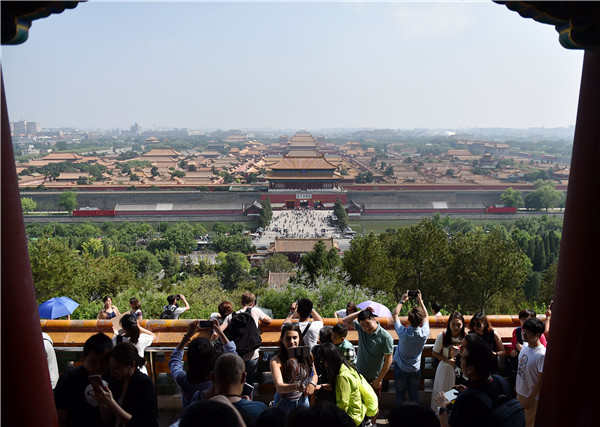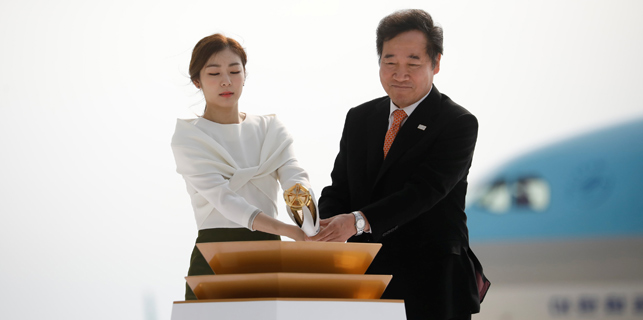Beijing's growing backbone
 |
|
Tourists look at the Palace Museum at the Jingshan Park. [Photo/Xinhua] |
The capital's north-south axis reflects both Chinese culture and the country's history. Liu Xin and Kong Xiangxin report.
Chinese architect Liang Sicheng, a pioneer of heritage preservation, says: "The unique beauty of Beijing's design is due to its zhongzhouxian."
The capital's north-south central axis, or zhongzhouxian, possibly the world's longest and greatest, according to the architect, has been extended and rejuvenated many times over the centuries.
The original zhongzhouxian during the Yuan Dynasty (1271-1368) stretched 3.7 kilometers. During the Ming (1368-1644) and Qing (1644-1911) dynasties, its length increased to 7.8 km, from Yongdingmen in the south to the Drum and Bell Towers in the north.
The axis was extended again in 2003 when the city prepared for the 2008 Olympic Games.
The Olympic Park is considered as one of the most important areas along the axis today.
Here the China Science and Technology Museum has been open to the public since 2009. Next door, the new China National Sinology Center building has been completed. And construction on the headquarters of the Asian Infrastructure Investment Bank began in September 2016.
Zhao Jin, operations director of Beijing Inno-Olympic Group Co Ltd, which is the Olympic Park's property management company, says the China Intangible Cultural Heritage Hall and the new site of the National Art Museum of China are also to be built along the zhongzhouxian.









